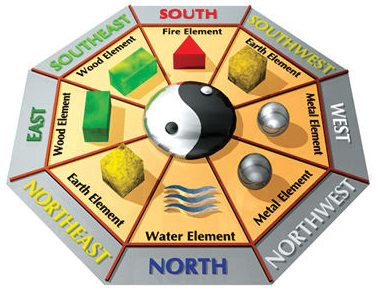|
|
By Jocelyn Chui
Northwest Asian Weekly
If you are shooting for a good start to the Year of the Metal Rabbit, looking into the practice of feng shui may put some extra luck in your pocket.
Although feng shui may appear complex, and there are many skeptics, it has a history of more than 3,500 years. Feng shui is about aesthetics. It applies astrological and geographical values to the items around you to obtain a positive energy flow for a better life. It can be as simple as putting away a mirror that reflects your face every morning. It can involve significant changes, like adding a new window to your house to bring in more sunlight.
Obviously, feng shui is not a one-size-fits-all fix for every space. In fact, each place has its own energy map, which is based on the direction of the house and the birth dates of its residents. If you understand the basic concepts of feng shui, you will be able to enhance your surroundings.
It’s a good idea to apply annual feng shui updates. Now is a good time to start.
The five elements and colors
 Fire — the element representing passion and high energy is highly recommended in the south, northeast, and southwest. Placing fire element colors such as red, orange, purple, pink, and strong yellow in designated directions can help to create a supporting energy for work and school.
Fire — the element representing passion and high energy is highly recommended in the south, northeast, and southwest. Placing fire element colors such as red, orange, purple, pink, and strong yellow in designated directions can help to create a supporting energy for work and school.
Earth — the element representing nourishment and protection is a symbol for your home in feng shui. It should be strongly emphasized in the northeast and southwest with decorations in sandy colors, like beige and light yellow. This is done to improve the stability of life.
Metal — the element representing clarity and preciseness should be the strongest in the west and northwest. Decorating your workplace with gray and white will give you a sharp vision and keep you away from distractions.
Water — the element representing freshness and abundance works best in the north, east, and southeast. If traditional feng shui water cures, such as fountains and mirrors, are not an option for you, try decorations in blue and black to achieve a refreshing energy of calm and ease.
Wood — the element representing health and vitality should be focused in the east, southeast, and south. Placing plants or decorations in brown and green in your space can help to foster growth.
Numbers and their meanings
Numbers come in handy in feng shui. Numbers are used to interpret your environment and your personal growth. Below is a simple breakdown of the meanings behind the numbers.
0 — void, nothingness, potential
1 — unobstructed flow of energy, new beginnings
2 — balance, choice, cooperation
3 — creativity, family, self-expression
4 — stability, grounding, security
5 — change, resourcefulness, adventure
6 — calm, patience
7 — contemplation, self-evaluation, solitude
8 — infinity, abundance, success in business
9 — highest number, accomplishment, attainment
How do you find out what your single-digit lucky number is? One way is to use your date of birth. A person born on Feb. 7, 1988, would add 2, 7, 1, 9, 8, and 8. This equals 35. Then, add 3 and 5, which is 8, the person’s lucky number.
Rather than focusing on whether something is good or bad, in feng shui, numbers serve as tools to tell you specific energy tendencies. An example of applying numbers would be looking at your house number or apartment number. You will know what types of energy you may be missing, and this lack can be fixed by reinforcing certain feng shui settings. Decorations can be in the combination of an individual’s lucky number.
Like other systems of aesthetics, feng shui has a lot to do with your experience with places. If you spend time observing the feng shui patterns, by the end of this year, you will be able to share some feng shui tips with your friends for the Year of the Dragon. ♦
Jocelyn Chui can be reached at info@nwasianweekly.com.





We detifinely need more smart people like you around.